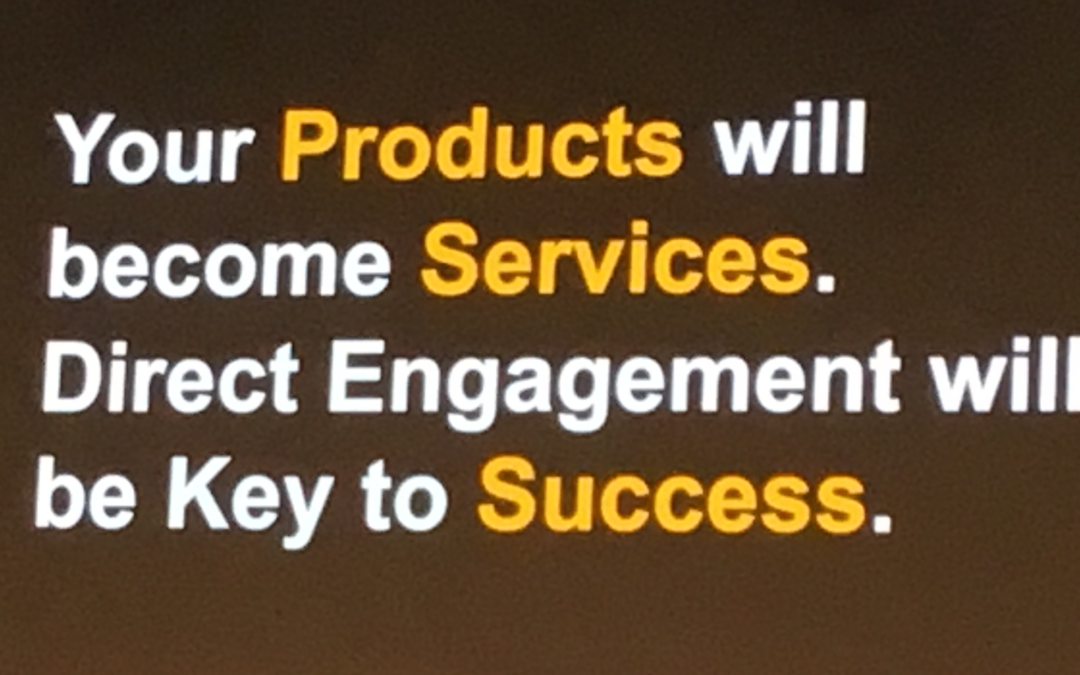
by twieberneit | Oct 28, 2017 | Blog |
The fall conference season is in full swing. Of the big 4 we had Oracle Open World and the SAP Hybris Summit, with the Salesforce Dreamforce, SAPPHIRE, and Microsoft Connect() still to come. I have covered the SAP Hybris Summit, so do not need to say much about it anymore. The event was short on great announcements – maybe they will come at SAPPHIRE – but certainly contributed to showing the clear vision forward that SAP has. And it is a compelling and consistent vision. OOW 17 was a different beast, most notably with the announcement of Oracle 18c. A year ago Oracle took Amazon full on, declaring it enemy number 1. Many analysts, including myself, were confused about this. Why Amazon and not Microsoft? After all Microsoft is the company that has a very credible IaaS, PaaS, and SaaS. Add the operating system and productivity software and you have a company with a formidable software stack that can be on the winning side of a Clash of Titans. While CTO Larry Ellison still took pot shots at Amazon in his keynotes, one can come to the conclusion that these are a kind of diversion, and that Oracle is back in best Musashi style. Oracle steps up its IaaS game The AI driven automation of Oracle 18c is game changing in the database play, and hence in IaaS. The new container engines should bring Oracle’s cloud on par with AWS and Azure. All three, Microsoft, Salesforce, and SAP now have something to chew upon. SAP, because their databases are now lacking a real important argument. And that has an...

by twieberneit | Oct 23, 2017 | Analysis, Blog |
This year’s SAP Hybris Summit in Barcelona was attended by almost 3,000 paying participants, which is likely to make it the biggest ever, in spite of the recent unrest in Catalonia. It was packed with partners and presentations. The message all around was about subscription economy, how companies will need to transform themselves from product- to service companies, and how SAP supports this by delivering YaaS, networked solutions, IoT and machine learning, based upon the SAP Cloud platform. Owing not only to the topic of subscription economy GDPR was, of course, a topic, too. The key message here was: Our software helps you being compliant. With SAP Hybris standing not only for ecommerce but also for SAP’s new brand of CRM (oops, engagement) solutions, there was astonishingly little information about the Sales- and Service Clouds and only a few bits about the Marketing Cloud. The pending acquisition of Gigya was naturally out of scope, although Gigya as a partner featured in the show with a booth and presentations in the theaters. Day One Having said this, the first keynote, held by SAP Hybris president Carsten Thomas, was slightly underwhelming. It set the stage for the topic, but was essentially last year’s content. The narrative was all about how companies like Uber and Airbnb change the game for traditional companies, the impact of machine learning, and the importance of focusing on experiences (not even outcomes). In brief: nothing new, and only a fuzzy view on SAP Hybris’ strategy. It, however, was presented very well. The Q&A’s offered on day one added some more flesh to the topics, also on the...

by twieberneit | Sep 1, 2017 | Blog |
A few weeks ago I wrote an article about customer service in a world of ambient computing. This article looked at customer service from a customer’s point of view. In it I described how I see customer service getting humanized again by leveraging the advances in AI technologies like Natural Language Processing, speech-to-text- and text-to-speech generation along with intent determination. Leveraging these technologies customer service will turn into a conversation and it won’t matter anymore whether service is delivered by a bot or by a human. For the customer it will all appear to be the same. Instead of FAQs or web searches, bots will be the first line of support and escalate a problem to humans if they cannot solve it on their own. The obvious question is whether there will be an impact on the customer service center? And it probably does. Call centers, and with it the service agents as well as their managers, already now are under intense pressure to deliver, and to deliver more efficiently. With the increasing use of call deflection technologies like FAQs and communities there is a trend for the incidents facing the agents becoming more challenging. For example Helpshift states that already with its technology it is able to deflect about 90% of all incidents, which are solved via the native in-app FAQ that is delivered by the them. This statement basically says that the support staff is basically relieved of dealing with simple matters but has the chance to take up the more challenging ones. Still, in a world of ambient computing any given app can have hundreds of...

by twieberneit | Aug 11, 2017 | Blog |
A few weeks ago I wrote an article about customer service in a world of ambient computing. This article looked at customer service from a customer’s point of view. In it I described how I see customer service getting humanized again by leveraging the advances in AI technologies like Natural Language Processing, speech-to-text- and text-to-speech generation along with intent determination. Leveraging these technologies customer service will turn into a conversation and it won’t matter anymore whether service is delivered by a bot or by a human. For the customer it will all appear to be the same. Instead of FAQs or web searches, bots will be the first line of support and escalate a problem to humans if they cannot solve it on their own. The obvious question is whether there will be an impact on the customer service center? And it probably does. Call centers, and with it the service agents as well as their managers, already now are under intense pressure to deliver, and to deliver more efficiently. With the increasing use of call deflection technologies like FAQs and communities there is a trend for the incidents facing the agents becoming more challenging. For example Helpshift states that already with its technology it is able to deflect about 90% of all incidents, which are solved via the native in-app FAQ that is delivered by the them. This statement basically says that the support staff is basically relieved of dealing with simple matters but has the chance to take up the more challenging ones. Still, in a world of ambient computing any given app can have hundreds of...

by twieberneit | Jul 11, 2017 | Blog |
Soon there will be an additional in-app customer service channel. So far we have a bunch of service channels, most of them requiring the user to leave the app to Pick up the phone for a call Browse for self support Open up an additional chat window Take on the social media channels Move on to messenger applications How about getting into your car to get to a store? … And then a customer may be moving back and forth between these channels with all the potential of losing track of the incident status and the friction that cross channel customer service still causes. There is no doubt that providing in-app support is the best possibility to offer fast issue resolution. It can provide telemetry information from within the app, identify the user and therefore provides a lot of relevant context that makes it easier for a service agent to help the customer without unnecessary delays. The customers’ shift to emphasize on the “Now” is also seen by Google research. Not Every Device is a Smartphone But what if the customer cannot pick up the phone to engage in a typed conversation? The customer might be engaged in a VR game, or driving a car, or in any number of situations without having a free hand. Maybe the customer simply doesn’t want to pick up a phone? What if the app doesn’t offer a user interface at all beyond a little light that indicates ‘I am available’? This would e.g. be the situation in an ambient environment that senses the presence of a person and acts accordingly. An environment...






